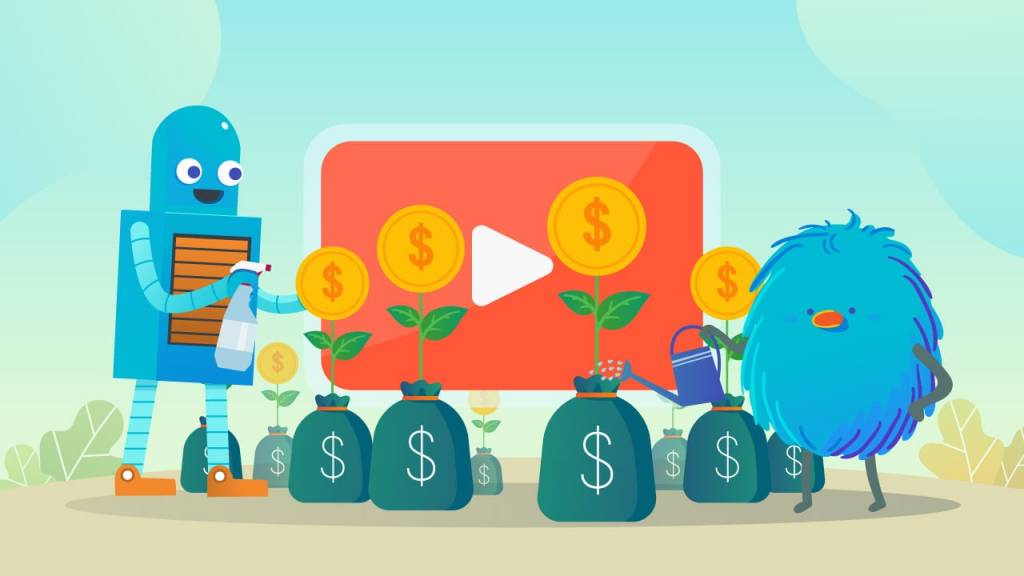
There are thousands, if not millions of explainer videos out there. I bet you’re too busy to see for yourself which ones are the best of them.
One particular survey says that marketers throughout the world are spending more money on online video advertising. It’s not surprising at all, because when someone sees a product in a video, there is a 174% greater chance they will buy that product.
But if you’re really looking for the most compelling videos, Hubspot has a list that you can refer to when you think of ‘the best explainer videos’ or simply ‘the top explainer videos’.
I’m going to give you an insight into the qualities the BEST explainer videos from that list have in common. That way you’ll know what to expect when you decide to make one for your company.
1. Scripts: Scripts Come First.
“Yeah of course!” I bet that’s what you’re thinking right now. But do you know how to gauge the quality of the script? Well, you might know but I’m going to tell you anyway.
A good mobile service provider will deliver a message quickly whether the sender is downtown or chilling at the beach somewhere. It’s the same with explainer video scripts. A good script will deliver the message no matter how it flows.
And there are four types of message-delivering methods or script flows. I’m going to tell you what they are and give an example for each one of them.
a. The Problem Solver
The video illustrates a specific problem – one that you are also experiencing. Then, BAM! they show you their products with the basic how-tos for the fix.
b. The Show Off
These types of scripts show you a demonstration of how the product works. Basically, it says “If we can solve this problem for ourselves, we can solve yours too.”
c. The Presenter
The name is quite self-explanatory. The presenter basically sets up a consultation between you and a product or a service through a video.
d. The Educator
The educator type of script is the one with more educational value rather than marketing value. The educator/inspirator usually highlights the benefits and risks of doing something. It all ends with a strong call to action. There’s no actual selling happening in the video, only a call to action at the end of it.
Whichever script you end up using, remember that the purpose of the explainer video is to make people understand how something works.
If you’d like to learn more about the ways of conveying messages through a video, we have an article about it.
But what’s the point of having a kick-ass script if there’s nobody watching the rest of the video you post on your website? In fact, 50% of websites only get 15 seconds of attention from their visitors.
Solution: get your visitors’ attention within the first 15 seconds.
How you accomplish this is very dependent upon your target market and product. To give you some insight on how to grab attention within the first 15 seconds of your video, here are some examples.
Tip: Get a second opinion about your script from a fresh mind’s perspective.
2. Amazing Visuals Catch Viewers’ Eyes
I’m sure you’ve known that it’s scientifically proven that visual data are stronger than texts. In fact, 90 percent of data in our brain is visual. The question is, what kinds of visuals does it take to catch the viewers’ attention?
In regards to the 15-second attention span, visitors give to your website, a strong, eye-catching visual is highly recommended to help you get their attention.
The most important factor is color. You need to know how to pick the right color for your videos. There are a couple of questions to answer before going for the color palette.
What gender is your product made for?
Males and females prefer different colors. When given the choice between pink and black, most males would choose black. However, you can’t rely 100% on the general assumption about gender color preference. Many men love pink, and many women prefer black to lavender. Suit your target market by conducting customer development research before deciding on the colors for your video.
How do you want your viewers to feel?
There’s a psychology sub-branch called color psychology or psychology of color. For example, in red we would usually find something that resembles physical courage, strength, and warmth. That’s why fire trucks are painted red.
If you’d like to learn more about picking the right color for your video, here’s an awesome infographic about that.
The next factor in visual marketing is what type of video are you going to make. There are many types of animated explainer videos. Here are some examples:
Whiteboard Animation
Whiteboard videos are most suitable for educational or training videos. That’s because they present information in the clearest way among all other 2D animation techniques. Besides, they use the ‘backstage approach’ in which the character creation process is ‘shown’ to the viewers.
Kinetic Typography (Kintextic)
Kintextic is a combination between text and kinetic animation. It’s most useful in obtaining psychological results such as raising awareness of a social issue, building a sense of urgency, emphasizing a certain message to your viewers, evoking specific emotions in your viewers
Motion Graphic
Motion Graphic is more viable If you’re selling a relatively complex product/service or If you wish to explain an abstract concept such as e-commerce, financial services, etc.
In addition, motion graphic videos are considered to be the best way to advertise startups that generally aim to provide an engaging explanation of a relatively new product or service.
We also have a list of all types of animation that are popularly used in an explainer video.
Choosing the best one for you is dependent on what product or service are you planning to advertise.
3. Professional Voiceover Mesmerizes Audience
While script and visuals are important for an explainer video, a crackly and squeaky voice is a major turn-off for the viewers. Once they hear an unpleasant voice they’ll quickly move their hand to that ‘close’ button.
There’s one example of an animated explainer video I found that I think has unsettling voiceover, music, and audio quality.
Now compare that video with the one that employs a professional voice actor along with good-quality background music and sound effects.
I bet you find the second example more convincing, right?
4. Music Makes Everything Lively.
Picking the music for your video is certainly not an easy job. It has to be ‘in the loop’ with the script and visual of the video. A video production company usually offers music embedding as a package with the video production itself, so you don’t need to worry about picking the right one.
We can’t simply put a song from a pop artist to embed since it’s violating copyright rules. Therefore, some music requires royalty fees to be charged.
If you can find the right audio track for your video in one of the free tracks, and you think it’s enough, then you don’t need to spend any extra costs for this part of the video.
If you’re looking for more information about this, we have an article about royalty and royalty-free music and how to blend the tracks perfectly with the video.
Here’s an example of a video with good background music. It goes along perfectly with the script, visual, and voiceover.
Cool, right? You can also have that awesomeness in your video! just pick the right production house to craft your video for you and take part in every step along the way. Of course, you can make one yourself if you have the skills and resources needed.
5. Call To Action Helps You Get Conversion.
At the end of the video, a strong call to action helps to get more conversions. Whether it’s a phone number or an email address, your viewers might just need a little nudge to go in the direction that you want.
Take a look at this video:
There’s no call-to-action, website, or contact information.
Sure, now people can just google the name and easily find the contact number or place to buy the product. However, a big chunk of non-Google society still exists out there somewhere. Not to mention that the average attention span has been dramatically reduced since the mobile revolution began.
Let’s say there were 100,000 people watching the video. One percent of them think they just might like the product and want to know more about it. However, after watching the video until the very end, they don’t see any information about where to get the product and they might just forget about it ‘meh, not that I REALLY want that thing anyway’.
Boom! The company just lost 1,000 could-have-been-customers.
Conclusion
- Composing an awesome script is the foundation to make an animated explainer video that works wonders. However, how you deliver that script also has a big impact on the final results.
- The best-animated explainer videos are the result of a chain reaction from multiple components. An amazing script with poorly executed visuals or audio will leave the video unwatched after the first 10 seconds.
A team of the best illustrators and animators in the world won’t be able to craft their masterpieces without an awesome script as their guidelines.
TL;DR
To wrap everything up, making the best explainer video means you have to make a perfect brew of all those 5 factors. If you brew it in the wrong way, you’ll end up ruining the beauty. Here’s a takeaway of what you MUST do to get a great explainer video.
- Write an awesome script
- Grab the audience’s attention within the first 15 seconds
- Make it visually stunning
The rest is like the fries to your big mac — It’s a matter of preference, but most people find them delicious being served on one plate.
Well, that’s it for my awesome animated explainer video talks. I’m pretty sure some of you have different opinions about what an animated explainer video should and should not have.
If so, care to tell me in the comments?
